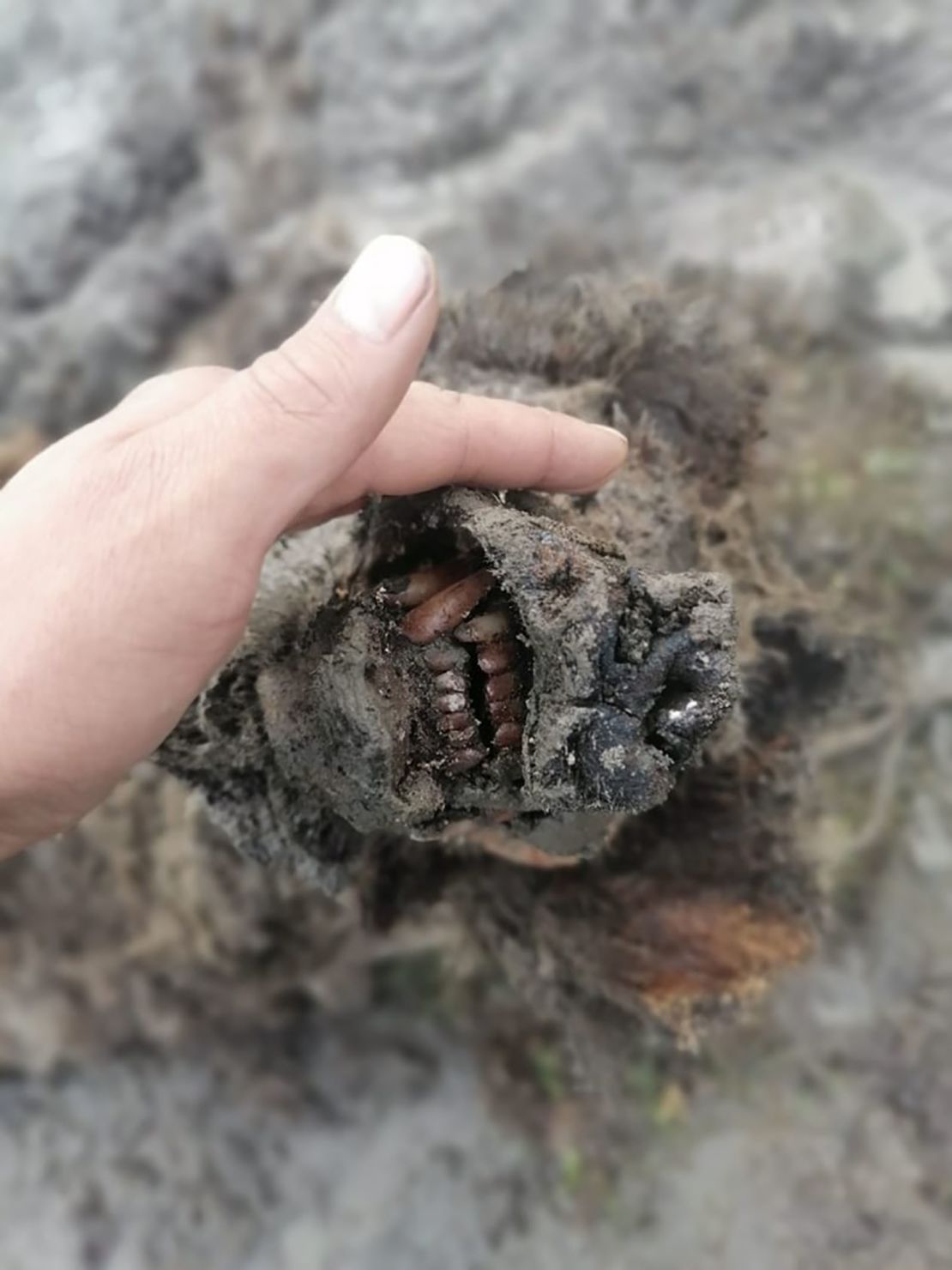The perfectly preserved remains of an Ice Age cave bear have been discovered in the Russian Arctic – the first example of the species ever to be found with soft tissues intact.
The astonishing find was made by reindeer herders on the Lyakhovsky Islands, which are part of the New Siberian islands archipelago in Russia’s Far North.

Prior to this, only the bones of cave bears had been unearthed, but this specimen even had its nose intact, according to a team of scientists from the North-Eastern Federal University (NEFU) in Yakutsk, Siberia.
The discovery is of “world importance,” a leading Russian expert on extinct Ice Age species said.
In a statement released by the university, scientist Lena Grigorieva said: “Today this is the first and only find of its kind – a whole bear carcass with soft tissues. It is completely preserved, with all internal organs in place including even its nose.
“Previously, only skulls and bones were found. This find is of great importance for the whole world.”
The adult animal was found by a group of reindeer herders, who then transferred the right to research the specimen to the NEFU, which is at the forefront of research into extinct woolly mammoths and rhinos.
According to the team, the cave bear (Ursus spelaeus) is a prehistoric species or sub-species that lived in Eurasia in the Middle and Late Pleistocene period and became extinct some 15,000 years ago. Preliminary analysis suggests the bear is between 22,000 and 39,500 years old.
Maxim Cheprasov, senior researcher from the Mammoth Museum laboratory in Yakutsk, said in the statement: “It is necessary to carry out radiocarbon analysis to determine the precise age of the bear.”
Scientists have not yet been able to visit the site of the discovery – the ancient carcass was found a long way from Yakutsk, which itself is more than 5,000 miles from Moscow.
Significant discoveries, including mammoths, woolly rhinos, Ice Age foal, several puppies and cave lion cubs, have been made in Siberia in recent years as the permafrost melts.





